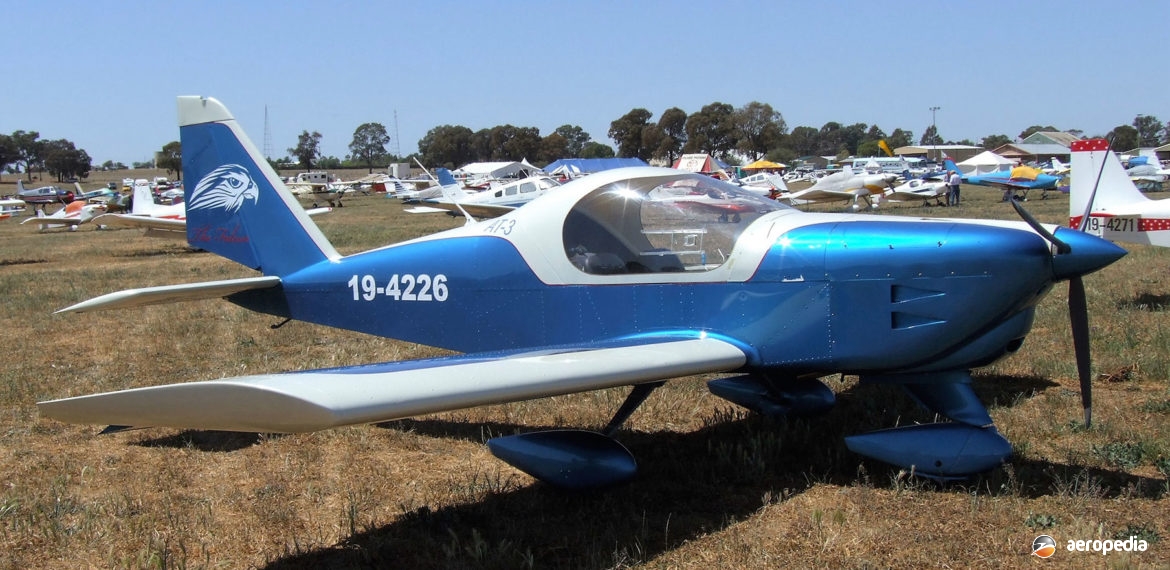Photograph:
Aero AT-3 19-4226 (c/n AT-3-007) at Narromine, NSW (David C Eyre)
Country of origin:
Poland
Description:
Two-seat light sport monoplane
Power Plant:
One 80 kw (100 hp) Rotax 912 four-cylinder, four-stroke horizontally-opposed liquid-and-air-cooled engine
Specifications:
- Wingspan: 7.55 m (24 ft 8 in)
- Length: 6.25 m (20 ft 5 in)
- Height: 2.23 m (7 ft 3 in)
- Wing area: 9.3 m² (100.6 sq ft)
- Max speed: 236 km/h (147 mph)
- Max cruising speed: 215 km/h (134 mph)
- Cruising speed: 200 km/h (124 mph)
- Stalling speed: 82 km/h (51 mph)
- Rate of climb: 246 m/min (808 ft/min)
- Ceiling: 4,000 m (13,123 ft)
- Design load factor: +3.8/-1.5G
- Range: 795 km (494 miles)
- Empty weight: 350 kg (771 lb)
- Useful load: 232 kg (511 lb)
- Loaded weight: 582 kg (1,282 lb)
History:
The AT-3 was designed and developed in Poland by Aero Sp of Warsaw as a light two-seat sport aircraft of all-metal construction. Derived from the Pottier P220 it could be fitted with variants of the Rotax 912 series of four-cylinder engines, or the Limbach L2400 series. It could be obtained in complete factory-built form or as a kit and has been certified under JAR-VLA regulations. It has been designed as a low-cost, low-maintenance, basic training aircraft which was also suitable for touring, with a cruising range at 200 km/h (124 mph) of up to 900 km (559 miles) using 15 litres ((3.3 Imp gals) of fuel an hour. Fuel capacity was 70 litres (15.4 Imp gals) and it was fitted with a fixed pitch GT-Propeller. Dual controls were standard.
It had a robust maintenance free undercarriage and components of the airframe were anodised for corrosion protection. The canopy folded forward for ease of access to the cockpit. A range of specific instrumentation and avionics options were available, and the seats were covered in leather upholstery.
First example of the series arrived in Australia in late 2003 for Tiger Flight Aviation, becoming 19-4226 (c/n AT-3-007) described as an AT-3/R100.

